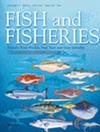利用地球观测数据监测渔船休闲捕鱼
IF 6.1
1区 农林科学
Q1 FISHERIES
引用次数: 0
摘要
休闲钓鱼在沿海地区广泛存在,并产生了巨大的生态、渔业和社会经济压力。与商业捕鱼不同,小型休闲船队由于缺乏强制使用船舶跟踪系统(如自动识别系统(AIS))而难以监控。最近,遥感技术已成为监测海洋活动的有希望的替代办法。在此,我们评估了高时空分辨率卫星图像在海洋保护区内临时禁止捕鱼期间监测休闲渔船每日变化的潜力。通过比较卫星衍生的船只探测与AIS记录,我们证明卫星数据可以可靠地捕捉到AIS错过的休闲捕鱼活动的日常变化,包括禁令结束后的显着增加。这些发现证实,卫星观测可以持续地探测到小型渔船,并揭示其精细尺度的时空格局。当与当地知识相辅相成时,这种方法可以增强我们为休闲渔业的空间规划和基于生态系统的管理做出贡献的能力。本文章由计算机程序翻译,如有差异,请以英文原文为准。
Leveraging Earth Observation Data to Monitor Boat‐Based Recreational Fishing
Recreational fishing is widespread in coastal zones and exerts significant ecological, fisheries‐related and socio‐economic pressures. Unlike commercial fishing, small‐scale recreational fleets are challenging to monitor because they lack enforced use of vessel tracking systems such as the Automatic Identification System (AIS). Recently, remote sensing technologies have emerged as promising alternatives for monitoring marine activities. Here, we assess the potential of high spatio‐temporal resolution satellite imagery to monitor daily changes in recreational fishing boats during a temporal fishing ban within a marine protected area. By comparing satellite‐derived boat detections with AIS records, we demonstrate that satellite data can reliably capture daily changes in recreational fishing activity missed by AIS, including a marked increase immediately following the end of the ban. These findings confirm that satellite observations can consistently detect small fishing boats and reveal their fine‐scale spatio‐temporal patterns. When complemented with local knowledge, this approach enhances our capacity to contribute to the spatial planning and ecosystem‐based management of recreational fisheries.
求助全文
通过发布文献求助,成功后即可免费获取论文全文。
去求助
来源期刊

Fish and Fisheries
农林科学-渔业
CiteScore
12.80
自引率
6.00%
发文量
83
期刊介绍:
Fish and Fisheries adopts a broad, interdisciplinary approach to the subject of fish biology and fisheries. It draws contributions in the form of major synoptic papers and syntheses or meta-analyses that lay out new approaches, re-examine existing findings, methods or theory, and discuss papers and commentaries from diverse areas. Focal areas include fish palaeontology, molecular biology and ecology, genetics, biochemistry, physiology, ecology, behaviour, evolutionary studies, conservation, assessment, population dynamics, mathematical modelling, ecosystem analysis and the social, economic and policy aspects of fisheries where they are grounded in a scientific approach. A paper in Fish and Fisheries must draw upon all key elements of the existing literature on a topic, normally have a broad geographic and/or taxonomic scope, and provide general points which make it compelling to a wide range of readers whatever their geographical location. So, in short, we aim to publish articles that make syntheses of old or synoptic, long-term or spatially widespread data, introduce or consolidate fresh concepts or theory, or, in the Ghoti section, briefly justify preliminary, new synoptic ideas. Please note that authors of submissions not meeting this mandate will be directed to the appropriate primary literature.
 求助内容:
求助内容: 应助结果提醒方式:
应助结果提醒方式:


